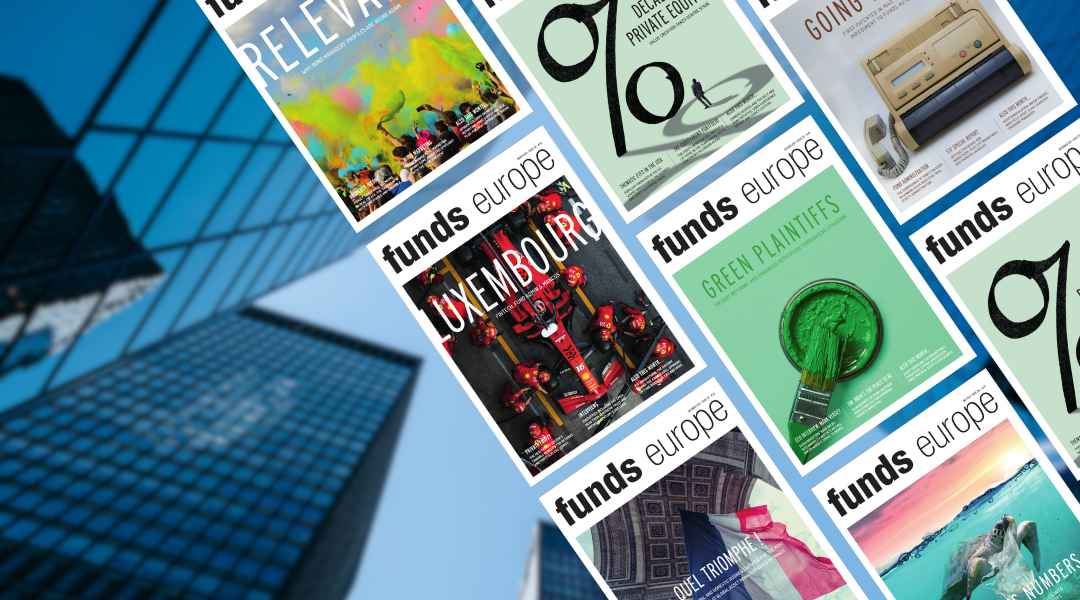 The high-end and sophisticated luxury market is booming, thanks to the wealth effect in emerging markets. Stefanie Eschenbacher asks if investing in luxury brands may be the ultimate way to capture the emerging market growth story?
The high-end and sophisticated luxury market is booming, thanks to the wealth effect in emerging markets. Stefanie Eschenbacher asks if investing in luxury brands may be the ultimate way to capture the emerging market growth story?
China’s new anti-corruption campaign, its crackdown on gift-giving and extravagance, has hit luxury goods sales. This has been especially, but not exclusively, the case for watches.
And yet the high-end and sophisticated luxury market in Asia is booming. In recent months, a shift to more personal consumption in women’s apparel has given the sector a boost.
Revenues from luxury goods sales in China are forecast to grow by up to 8% this year. In the rest of the Asia Pacific region, growth rates are forecast to reach as much as 9%.
This is the highest regional growth rate worldwide, says management consultant Bain & Company, which compiled the numbers.
These numbers are significantly lower than in previous years, but nevertheless impressive.
Worldwide, revenues in the luxury goods market may be growing up to 50% faster than global GDP – on track to beat the €250 billion ($329.5 billion) sales threshold by mid-decade.
Bain & Company lists Chanel, Louis Vuitton and Gucci as the most-desired brands among Chinese women, who typically buy cosmetics and clothes.
Men, who tend to focus on watches, desire Louis Vuitton, Rolex and Chanel.
Nowhere is the affection for luxury goods more visible than in Hong Kong.
On an ordinary weekday morning, hundreds of customers, mostly Chinese visitors, form long queues outside designer stores on the southern part of Canton Road.
Revenue growth in the luxury goods sector has outpaced that of many other sectors, driven by increasing wealth in emerging markets.
Frank Li, managing director and chairman of the investment committee, at China Asset Management (Hong Kong), says Chinese desire Western brands, such as Hermès and Chanel.
Increasingly, they travel to Europe to shop at flagship stores in Paris and Milan.
“The percentage of luxury goods bought by Chinese may be underestimated because they increasingly buy in Europe,” he says.
Li estimates that between 25% and 30% of the luxury goods sold in Europe were bought by Chinese visitors.
It is no longer about owning that designer bag; it is about owning that designer bag bought from Rue Cambon 31 in Paris.
Could investing in luxury goods be the ultimate way to capture emerging market growth?
“Themes come and go,” says Bill Maldonado, chief investment officer, Asia Pacific, at HSBC Global Asset Management. “One theme that is not a fad is the rise of the emerging middle class and the wealth effect.”
Maldonado, who is not authorised to discuss individual stocks, says there is no fundamental problem with an emerging market fund manager buying stocks listed in developed markets capture such growth trends.
“The issue comes for people that manage legacy products, with mandates that were designed before anyone envisaged such a possibility.”
There is anecdotal evidence – the queues outside the Chanel shops in Hong Kong, the fact that sales staff at the Louis Vuitton flagship shop at the Avenue des Champs-Élysées in Paris speaks fluent Chinese and Russian.
However, it is not possible to find out exactly from where a company gets its revenues.
Companies often use transfer pricing to shift profits and losses to certain jurisdictions for tax reasons, or they simply do not disclose more than required by the regulators.
“While most multinational companies have some sort of exposure to emerging market countries, they are not 100% dedicated,” Maldonado says. “Emerging market companies tend to grow faster, but their attraction is offset by a higher risk profile.”
While large funds often blend multinational ompanies with local ones, Li says smaller funds tend to have a larger exposure to “pure China” stocks. That is as long as they have a strong research team on the ground.
Large funds are often constrained in their investment approach and need to be able to meet redemptions from investors. Many of the less liquid small caps are off limits for them.
CONSUMPTION
“Some 20 years ago, it seemed like a lot of companies, such as cement businesses, were growing at 30% every year,” Li says of investing in China. “Growth is now slowing and the model is changing, away from fixed asset investment to service and consumption.”
Li says buying local-listed joint ventures of multinationals or companies further down the supply chain are another good way to capture emerging market growth.
Just before the luxury car market took off in 2009, Li recommended Brilliance China Automotive, the Chinese partner of German carmaker BMW, to his clients when he was head of China research at JP Morgan Asia Securities.
One related investment of his is Cheng Shing Rubber, a global car tyre company in Taiwan.
However, Li notes that there are vast disparities in the car market in terms of performance. “Year-to-date, the best performers and worst performers in terms of stockmarket returns have been in the car sector,” he adds.
Li says some of his high conviction companies include home-grown brands in health care and pharmaceuticals and the environmental sector. All these sectors, Li adds, are expected to receive a boost from the Chinese government.
“New economy companies are much more expensive on the A-shares market,” Li says of the Chinese stockmarket, which is only accessible to investors with a qualified foreign institutional investor license, and a quota.
“These companies tend to be cheaper in Hong Kong or even in the US,” he says.
Rahul Chadha, co-chief investment officer at Mirae Asset, says he favours local brands that cater for lower income parts of the population.
“Somebody who is looking at these markets from a distance will spot the more obvious ones, but there are plenty of local opportunities for those who are closer to the market,” Chadha says. “Local names capture the opportunities much better.”
In recent years, he has invested in companies that produce snacks, tobacco and pharmaceuticals.
STYLE CHANGES
Chadha, who is only authorised to talk about companies featured in his top ten holdings, says he has invested in snack food companies, which are gaining market share from the “unorganised” sector in China.
Other themes are the ageing population across Asia, the emergence of lifestyle diseases and a trend to insure as wealth levels increase.
“I am not averse to investing in large multinationals, but the question is whether we get the right valuations and whether they have the same growth potential,” he says.
“Their corporate governance is often better, but some of them are overpriced.”
Chadha, though, says that the wealth effect in China increases opportunities. Among his high conviction holdings are several casinos in Macau, which is the gaming capital of the world, with gaming revenues six times those of Las Vegas.
Overall growth rates do not necessarily translate into higher stockmarket returns and Maldonado says that investors tend to forget that, especially in Asia.
Maldonado says it all comes down to fundamental research and profit-based investing. Is the business profitable? Is it accessible at a fair price?
What trends is the industry exposed to?
There are a whole lot of factors that will influence the success of a company, and some of them are simply not found in accounting documents.
In the case of luxury brands, it is the fact that tastes are evolving. Chanel has now overtaken Louis Vuitton as the most-desired brand, perhaps because preferences are shifting away from ostentatious demonstrations of flashy wealth.
While Chanel is known for its simple sophistication, Louis Vuitton is instantly recognisable through its iconic monogram logo.
The key difference in the two brands suggests that Chinese consumers are beginning to develop more sophisticated tastes and are opting for more subdued looks.
Recent years have been frustrating for most emerging market investors. Maldonado says even though growth rates in emerging markets are higher, valuations are lower, and profitability is rising, they have lagged developed markets.
Despite stronger fundamentals of emerging markets, developed markets have outperformed.
Investors, too, are losing faith in the Asian growth story. August data from the Bank of America Merrill Lynch shows that emerging market equity funds have suffered record net outflows of almost $1.3 billion year-to-date.
FOCUS ON GROWTH
While global emerging market equity funds took in $8.7 billion, Asian mandates lost more than $2.6 billion. Those investing in Europe, the Middle East and Africa $3.1 billion, and Latin America $4.2 billion.
Meanwhile, developed markets took in $177.1 billion, $102.2 billion of which went into US equities. Japan took in net inflows of $34.3 billion and Europe $2.4 billion.
“Investors are seeing greenshoots in the US and Europe and are putting their money back into those markets,” Chadha acknowledges. “But the structural problems in those markets remain and in deleveraging economies, there will always be headwinds.”
Drastic shifts over periods as short as six months are nothing new to emerging markets.
Growth is what people like to talk about, including on the sell side, but there is a tendency to lose sight,” Maldonado says. “This is especially the case in Asia.”
Most emerging market managers, however, have learnt to position their portfolios for scenarios where six months of a stockmarket rally follow six months of slowdown.
©2013 funds global asia

 At times like these, HSBC Asset Management easily pivots towards emerging markets.
At times like these, HSBC Asset Management easily pivots towards emerging markets. A comprehensive, cost-effective, and transparent currency overlay hedging solution is crucial to mitigate FX exposure risks in the complex landscapes of Japan and China's FX markets, explains Hans Jacob Feder, PhD, global head of FX services at MUFG Investor Services.
A comprehensive, cost-effective, and transparent currency overlay hedging solution is crucial to mitigate FX exposure risks in the complex landscapes of Japan and China's FX markets, explains Hans Jacob Feder, PhD, global head of FX services at MUFG Investor Services. The world is transitioning from an era of commodity abundance to one of undersupply. Ben Ross and Tyler Rosenlicht of Cohen & Steers believe this shift may result in significant returns for commodities and resource producers over the next decade.
The world is transitioning from an era of commodity abundance to one of undersupply. Ben Ross and Tyler Rosenlicht of Cohen & Steers believe this shift may result in significant returns for commodities and resource producers over the next decade. Ross Dilkes, fixed income portfolio manager at Wellington Management, examines the opportunities and risks for bond investors presented by the region’s decarbonisation agenda.
Ross Dilkes, fixed income portfolio manager at Wellington Management, examines the opportunities and risks for bond investors presented by the region’s decarbonisation agenda. Shareholders in Japan no longer accept below-par corporate governance standards. Changes are taking place, but there are still areas for improvement, says Tetsuro Takase at SuMi Trust.
Shareholders in Japan no longer accept below-par corporate governance standards. Changes are taking place, but there are still areas for improvement, says Tetsuro Takase at SuMi Trust. Robert St Clair, head of investment strategy at Fullerton Fund Management, explores the reasons investors should be paying attention to the rising demand for healthcare in China.
Robert St Clair, head of investment strategy at Fullerton Fund Management, explores the reasons investors should be paying attention to the rising demand for healthcare in China.


